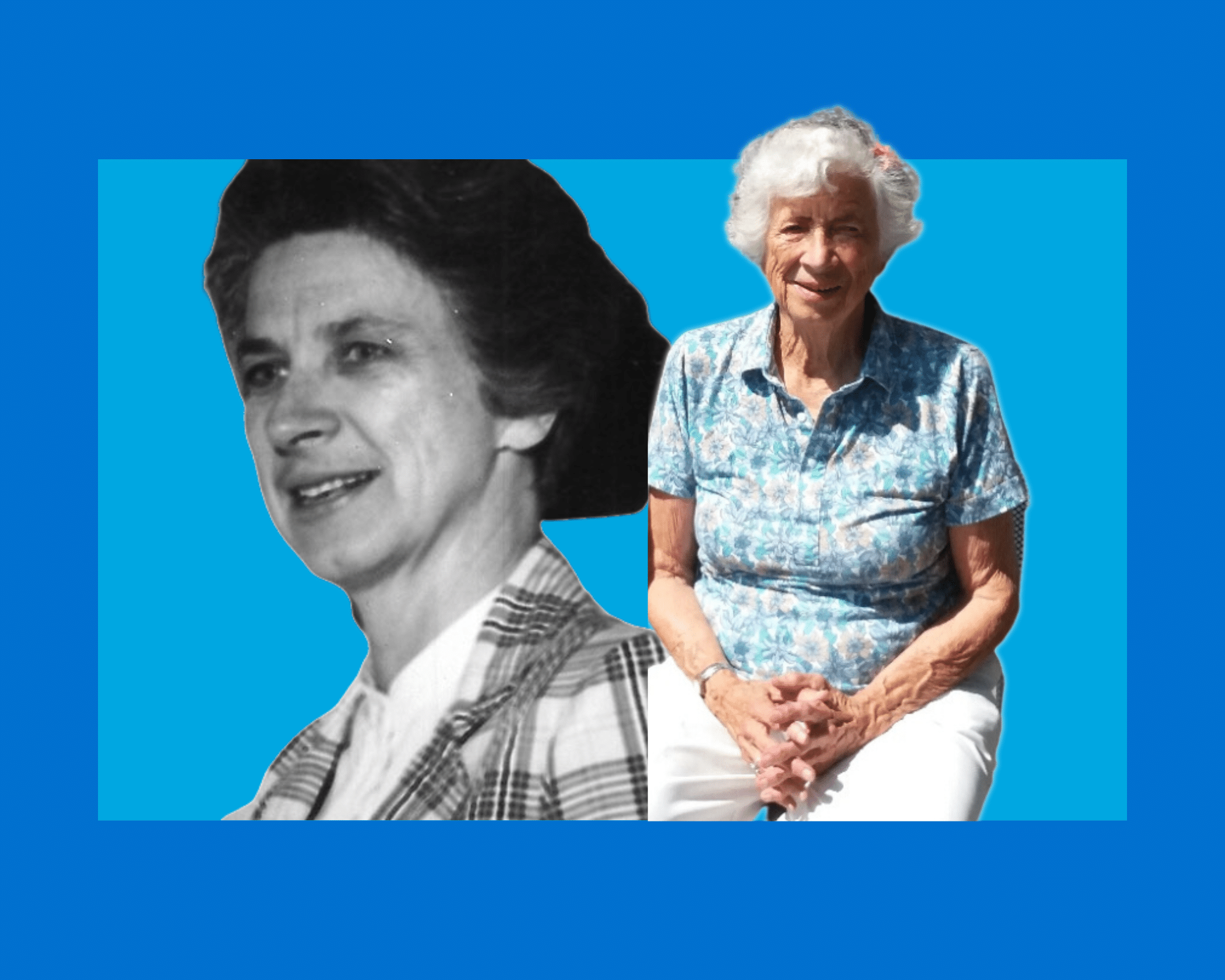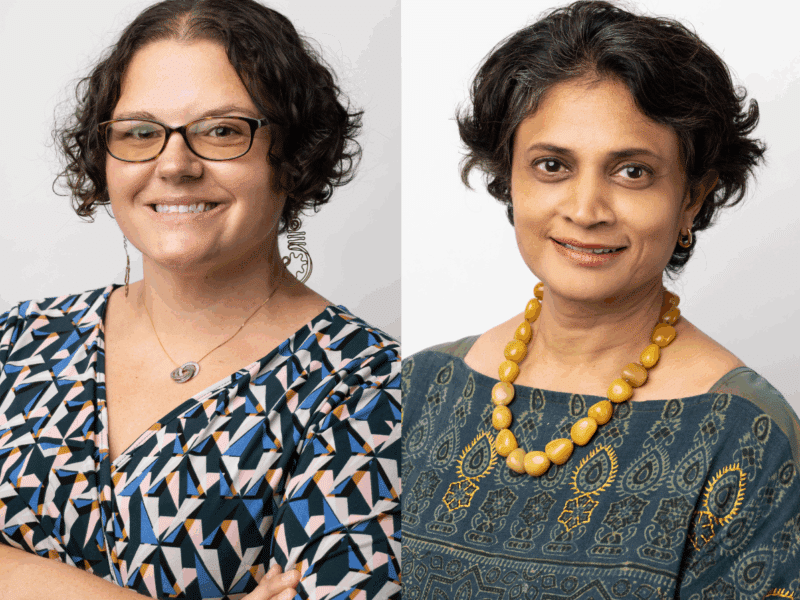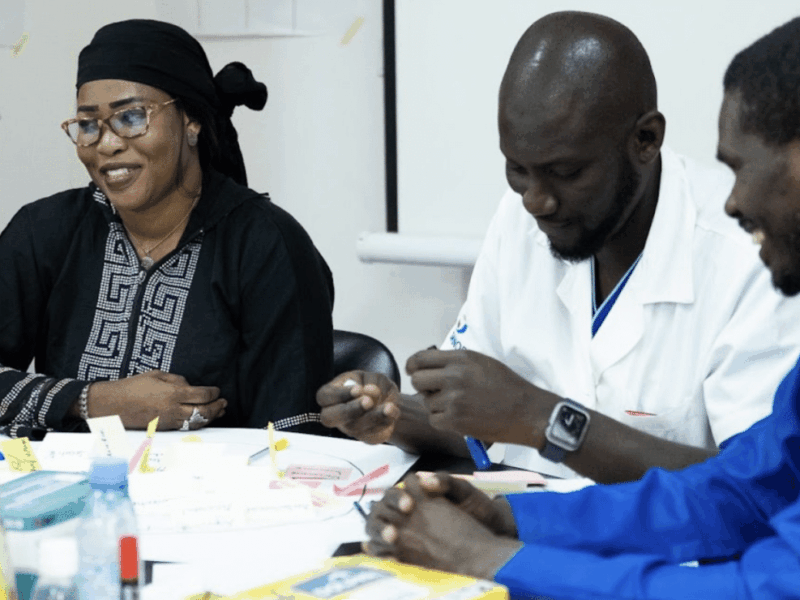As the Johns Hopkins Center for Communication Programs celebrates its 35th birthday, we take you back to the very beginning of the center with a Q&A with the person who started it all, Phyllis Tilson Piotrow, PhD. While CCP officially became a center in 1988 and later moved to the Health, Behavior and Society Department in 2005, the work truly began in 1978 when Piotrow and her colleagues were awarded a USAID grant to distribute Population Reports, a first of its kind publication that did regular pieces on the state of the contraception landscape around the world, and POPLINE, a collection that provided health personnel and researchers in low- and middle-income countries with access to journal articles, reports, books, unpublished resources, and abstracts in a time where very little was available to them.
Now 90, Piotrow recently sat down with Stephanie Desmon, CCP’s director of PR and communications to reflect on when the center was in its infancy with a small budget and a handful of employees, to today, when CCP works on large global projects and employs people in dozens of countries around the world. This conversation has been edited and condensed for clarity.
Stephanie Desmon: Start at the beginning …
Phyllis Piotrow: When CCP was established as a center, it was partly a recognition of 10 years of good, strong, innovative, creative work, and communication. But at the same time, it was an invitation to move forward and continue to be innovative and carry on what we’d been doing.
I would give major credit for the founding of CCP to two people: Henry Mosely, who was then the chairman of the Department of Population Dynamics and was really crucial for the establishment of the center, and D.A. Henderson, who was then dean of the school of public health. Henderson had been the director of the worldwide program to eliminate smallpox. And he really understood the role of communication in getting things done in public health. In public health, a lot of people still don’t understand behavior change communication and focus mainly on statistics and epidemiology. But if you want to make a difference in people’s behavior, you need to put a lot of attention not just on technology, but on good communication with people.
At that point, communication was considered a very soft science, and not comparable with epidemiology and other advanced sciences, which was the kind of research that others were doing. We had to work hard to make that case and prove to our donors – chiefly USAID – how we could make communication work. We not only had to prove it ourselves, but also we had to train our counterparts around the world to do the same kind of things we were doing here. I would say another challenge, which is still present, is how do you make communication projects sustainable?
SD: What did social and behavior change communication look like back then?
PP: There were about six or seven innovations that we were working on early at CCP.
One was the use of entertainment to educate, first through songs [encouraging healthy behaviors] like Lea Salonga and King Sunny Ade. In other words, communication required creativity. Entertainment education became an important way to reach people. This work was led by Patrick Coleman and Jose “Oying” Ramon. After the songs, there were radio and television soap operas and local theater, led by Esta de Fossard-Nelson, who won a lot of awards and is no longer living. The crucial part is that we taught other people around the world how to do it.
Another really important innovation was developing our P Process. When you went to develop a program, you didn’t walk in somewhere and say, ‘Oh, let’s do a nice poster.’ You had a process for developing projects and programs and you always started with research, and it was evaluated. That was a little bit new in the field of communication.
A third innovation was all the work in the field of quality of care, counseling, and interpersonal communication. The GATHER framework (Greet, Ask, Tell, Help, Explain, Return) was adopted in at least six languages and a dozen country versions, updated based on practice and research, and now serves as a tool worldwide for counseling interventions and training.
We also created the Leadership in Strategic Communication Workshop, and all the workshops that came after. The creator was Ben Lozare, who I think was the best teacher I’ve ever known in all my career. We helped people learn how to develop better practice. The workshops also led to creating the model for establishing [a global sister network] in different countries. The Bangladesh Center for Communication Programs, led by Mohammad Shahjahan, became a real model for others to follow.
Another thing we did was start teaching a course on health communication at the school of public health. First it was me and then Doug Storey – we taught a course where we did small-scale communication projects at the school. Many students came to me afterwards and said it was one of the most useful courses they’ve had in the whole school, because we said, ‘You’ve got to develop a project and carry it out, evaluate it, you have to prove that you could achieve behavior change on the part of the students here at the school of public health.’ It was a new experience. It ended up working very well. And it’s still going on.
I give myself a pat on the back for the quality of the people that we hired. People like Laurie Liskin, Philippe Langlois, Jane Bertrand, Alice Payne Merritt, Susan Krenn, Bill Glass, Larry Kincaid and many others. It’s really important to recognize so many contributions made by so many people. CCP has always had high-caliber staff who have worked together wonderfully, who have trained one another, who have mentored one another, and have really made CCP what it was and is today.
SD: What was the first project at CCP?
PP: Before we were even called CCP, the first thing we had was the Population Information Program, which was doing Population Reports and POPLINE, supported by USAID. That was really the beginning, 45 years ago. And Ward Rinehart was a crucial part of it as the first editor of Pop Reports.
We’ve been very fortunate in having had the leadership and support at USAID. USAID has always been a very strong and helpful and creative partner and donor. I know CCP has a lot of other donors now, but USAID has always played a crucial part.
SD: Why Population Reports?
PP: I was interested in family planning, especially as an issue of women’s rights and their ability to control their own fertility. There was so much controversy in the 1960s and 1970s on family planning. Oral contraceptives, IUDs and laparoscopic surgery for tubal ligation were new. And I thought this issue shouldn’t be controversial, this ought to be absolutely plain common sense. And this was a controversy where communication could really play an important role.
Population Reports were a series of reports on every different method of family planning or contraception because there was a lot of ignorance around the world. We did a report every year on the status of research and use for oral contraceptives, IUDs, female sterilization, male sterilization, injectables. The first aim was to get the information out, particularly to the providers, the clinics, and other health professionals about what is family planning. What is a contraception? How does it work? Why is it safe?
SD: And are you surprised that CCP is still here all these years later? Are you surprised at how many topics we take on aside from family planning?
PP: No, because I think people in public health are beginning to see more and more the importance of communication. I think people in public health are beginning to realize that if you want to scale things up, you have to focus on communication, and creative communication, using whatever media are available at that time.
You’ve got to get people’s attention and win them over. And it’s a science and an art in and of itself. And I think we’ve proved again and again, in a lot of different projects, that creativity and knowledge and being research-based is what works.
Research has always been very important. A lot of people wanted to rush in and do something, but we always said “no, no, no stop, we’ve got to be sure we have the research data before we start. We need to find out [from communities] what they’re thinking, what’s important to them.” If you don’t know what’s important to your audience, you can’t develop a good project.
SD: Are you surprised that this work continued to be challenging? It must have been so difficult, 35, 45 years ago, to reach people when we didn’t have the internet or social media or even personal computers.
PP: That’s why we started with Population Reports and printed material. It was a series of reports on every different method of family planning or process because there was a lot of ignorance around the world.
And that’s also why we eventually ended up creating sister organizations overseas, so the people in the local environment were involved. We also emphasized the importance of using every existing channel of communication. We got the First Lady of Ghana to make a speech promoting family planning in a football stadium. Sometimes we could do things in other countries that you wouldn’t have been able to do in the United States. I can’t quite picture [late First Lady] Barbara Bush speaking at halftime in a football game telling people to use condoms. But in other countries, sometimes things like that could happen.
SD: I understand you are known for your mottos or aphorisms.
PP: I learned these from some of the people who were mentors to me.
First: Think Big. I remember Jose Rimon once went into Egypt to improve picture pamphlets on contraceptives. While he was there, the support grew and he ended up persuading the government to do a larger national program.
Second: Start Small. And then gradually work up to something bigger and better.
And the third one: Begin Now. Don’t put things off thinking it will be easier to start next year or the year after. So, think big, start small, begin now – those three are crucial. I also would add – share credit with everybody who’s involved. Be sure that anybody who’s helpful gets credit for what they accomplished. That makes all the difference.
And finally, don’t wait to be invited into a meeting or a gathering, if you think it’s relevant. In the beginning, early on through the 80s, family planning people wouldn’t always be invited to United Nations meetings. But we went anyway. And that made a lot of difference. Just being present, whether you’re invited or not, where you see a crisis or a problem or an opportunity, where you can play a role.
So good luck and carry on the good work of CCP with your new leader Debora Freitas López. The work you do is so important.





